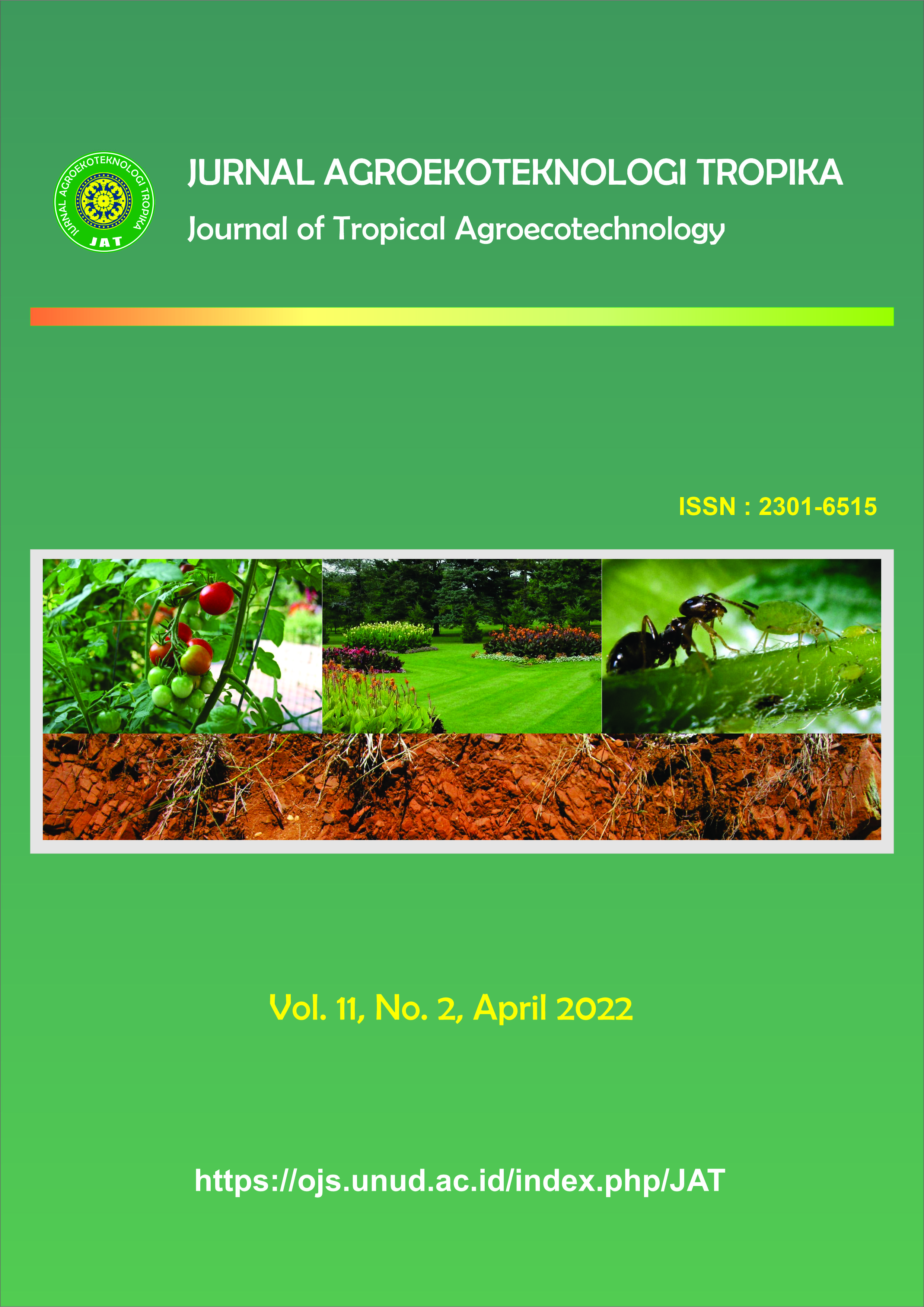Pengaruh Larutan Klorin dan Kemasan Plastic Film terhadap Perubahan Fisiko-Kimia Tomat (Lycopersicum esculentum Mill.) Selama Penyimpanan
Abstract
The Effect of Chlorine Concentration and Tomato Packaging Type on Physical and Chemical Changes during Storage in Tomatoes Plants (Lycopersicum esculentum Mill.)
Tomatoes are one of the important commodities that are vulnerable to contamination by various kinds of microorganisms. The thing that can overcome contamination is by washing and packaging. The chlorine compound that is most often used as a sanitizer is hypochlorite. The type of sanitizer used in this study was sodium hypochlorite (NaOCl). Packaging protects quality and sanitation so that consumers receive tomatoes fresher and quality is guaranteed, packaging should not interfere with the process of heat release from respiration. The type of packaging used in this study was LDPE plastic film and white stretch film (WSF). The design used in this study was a completely randomized design (CRD) with two factors and each combination was repeated three times, so that there were 36 experimental units. The first factor is the treatment of chlorine solution concentrations consisting of four levels: without chlorine solution, concentration of 100 ppm, concentration of 200 ppm, concentration of 300 ppm. The second factor is packaging with 3 levels of without packaging, packed with LDPE plastic film, packed with white stretch film (WSF). The results of this study indicate that the combination of washing using chlorine solution and the best packaging slows the physicochemical changes based on vitamin C variables where the decrease in fruit acid levels is shown in the 200 ppm chlorine concentration and packaged with white stretch film (WSF) treatment.



